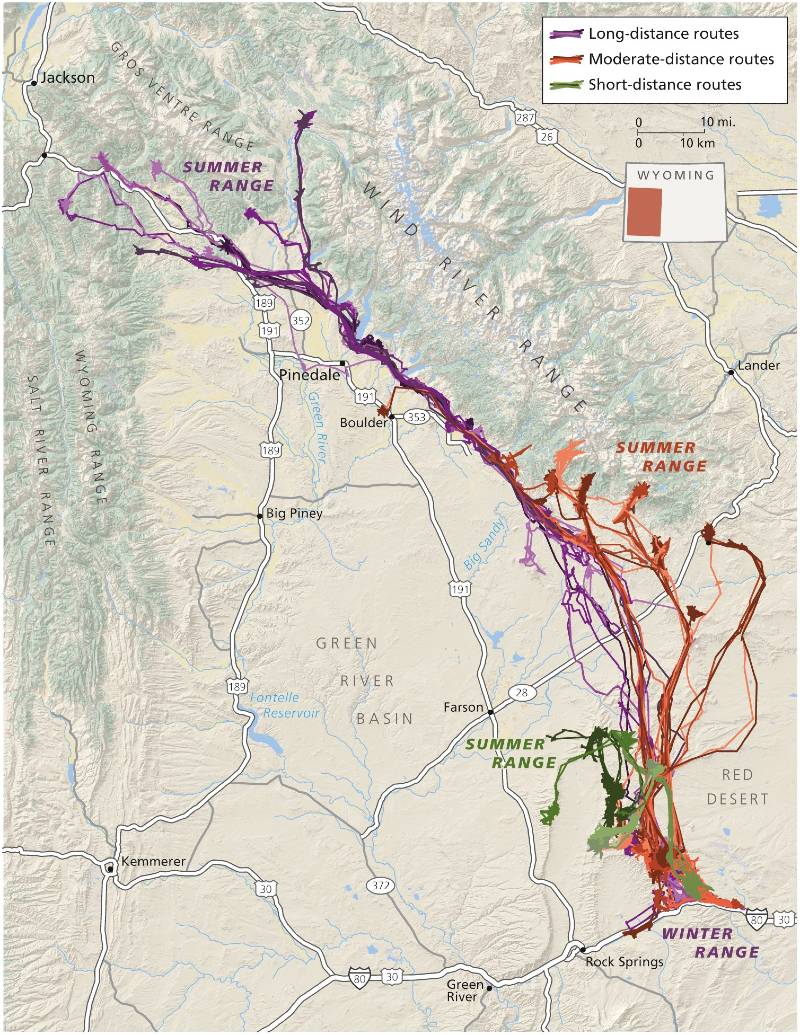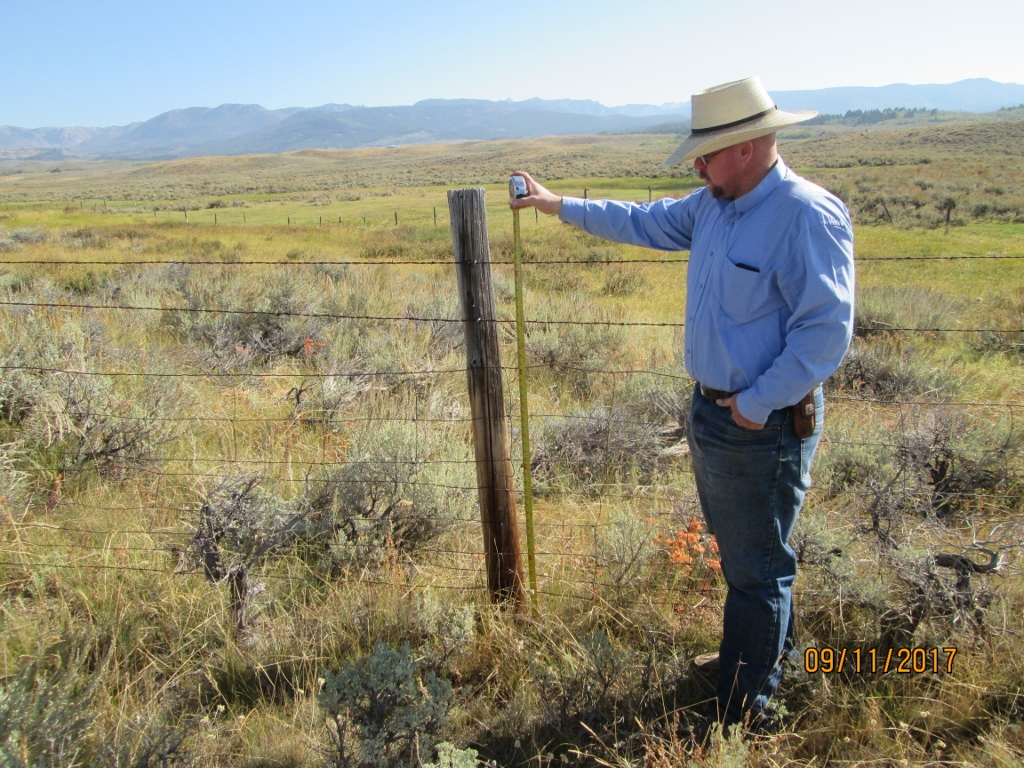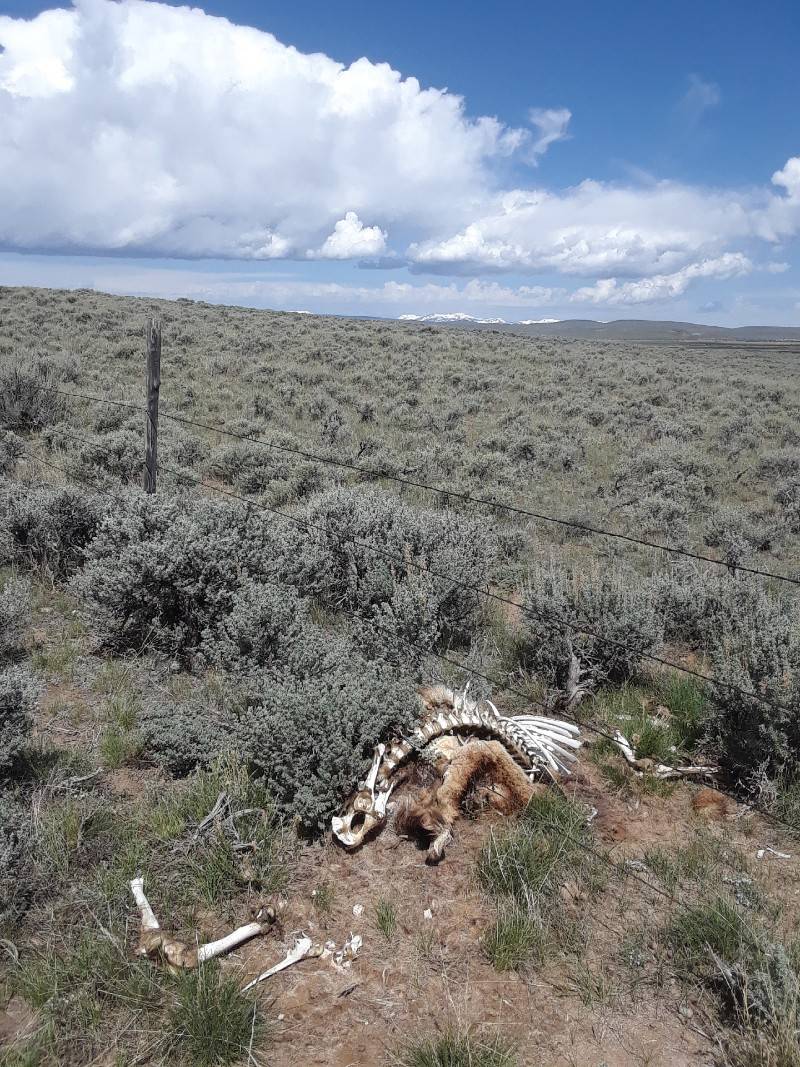Yellowstone, our nation’s first National Park, is synonymous with ‘wild.’ Yet most of the public park’s four million annual visitors don’t realize that many of the regal animals they photograph in the park live on private ranches for part of the year.
Private lands comprise about 30 percent, or six million acres, of the Greater Yellowstone Ecosystem. Tracking studies show migratory species like elk, mule deer, pronghorn antelope, bighorn sheep, and moose travel 30 to 200 miles twice each year, their well-trodden paths weaving between public and private land. Elk, for instance, forage in ranchers’ lower elevation pastures during the winter, and females often calve in agricultural fields in the spring before moving to Yellowstone, Grand Teton National Park, or neighboring national forests. The region’s tens of thousands of migratory big game animals underpin a vast food web, including bears, wolves, ravens, foxes, and eagles.

This breathtaking ecosystem and the billions of tourism dollars it draws to local communities depend on keeping working lands intact and profitable.
Guided by extensive listening sessions with local ranchers and partners, the USDA recently announced a new Big Game Conservation Partnership investing in private working lands across Wyoming. Using lessons learned from this Wyoming pilot, USDA seeks to scale up this model across the West.
The USDA is contributing an initial $15 million for the following stewardship actions in Fremont, Hot Springs, Lincoln, Park, Sublette, and Teton counties:
- Conserve big game habitat and sustain working ranches for future generations through the Agricultural Conservation Easements Program (ACEP) to ensure the land is not subdivided, mined, or developed.
- Enhance rangeland and water resources for wildlife and livestock through the Environmental Quality Incentives Program (EQIP) and the Regional Conservation Partnership Program (RCPP) to help landowners repair wet meadows or eroding streams, get rid of invasive weeds, and replace or remove fences so wildlife can move easily.
- Foster healthy native plants and productive grazing land through the Grassland Conservation Reserve Program (CRP) by paying landowners an annual habitat lease in exchange for keeping native grasslands intact while continuing to graze livestock.

preparation for replacing it with a wildlife-friendly version with cost-share from EQIP.
Photo by Jennifer Hayward, NRCS Wyoming.
This novel pilot rewards landowners for providing valuable ecological services for the public good, including direct compensation through 10- to 15-year habitat leases.
“We hear all the time from landowners that they want to play a role in supporting wildlife. They just can't go bankrupt doing it,” says Allison. “Through a habitat lease, ranchers can make a reasonable livelihood producing agricultural products while also keeping habitat healthy and whole.”

This Wyoming pilot also allows landowners to receive Farm Bill payments from both the Natural Resources Conservation Service and the Farm Service Agency for the first time. This means a rancher could tap into EQIP to manage invasive cheatgrass and apply for a habitat lease through Grasslands CRP to maintain native plants after weed treatment.
The USDA is collaborating with local partners to streamline delivery of financial resources, including the Wyoming Game and Fish Department, the Wyoming Wildlife and Natural Resource Trust, and many others. The USDA also visited the Wind River Reservation and hopes to build on conversations with the Eastern Shoshone and Northern Arapaho Tribes about how best to collaborate and support Tribal wildlife conservation priorities.
Across America, wildlife depends on habitat provided by private working lands. Yellowstone, with its iconic critters, is the perfect place to pioneer a locally led model that rewards the landowners there who are stewarding our treasured natural resources.
If you’re a rancher or landowner in Wyoming, and would like more information about this pilot, please contact NRCS or FSA at your local USDA Service Center. To find out more about wildlife conservation programs available to producers outside of Wyoming, go to farmers.gov/wildlife.
Brianna Randall is a freelance writer based in Missoula, Montana.


